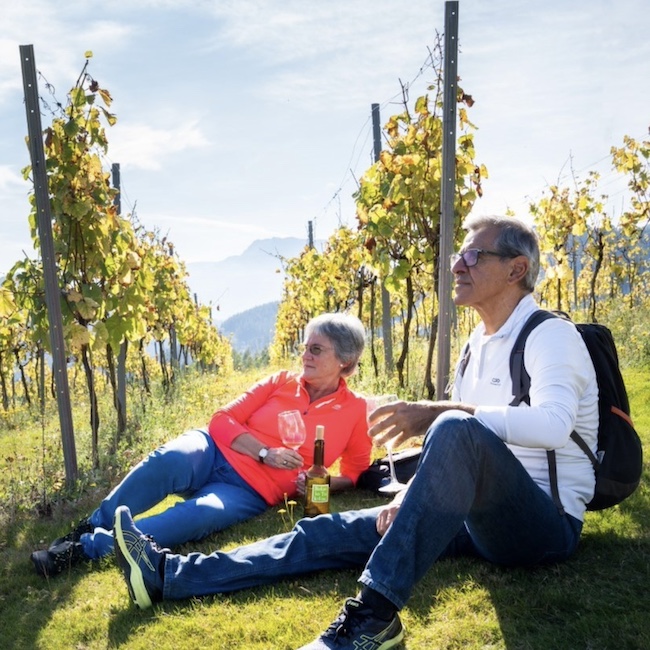.png.transform/rendition-xs/image_image%20(1).png)
Txakoli Routes, a Way to Connect Wine and Regenerative Tourism
Ten itineraries seek to connect visitors to this Biscay’s wine and gastronomic traditions as well local culture
Spain is one of the world’s top destinations for wine tourism, but a new, unique, and sustainable trend is the focus for a new route, Bizkaia’s Txakoli Route, focused on txakoli, the characteristic white wine in this region.
This route reflects the region of Biscay (Vizcaya in Spanish; Bizkaia in Basque) commitment to quality and not just sustainable but regenerative tourism, the goal of which is to be proactive, intentional, and leave the places we visit in better condition than when we arrived.
It’s comprised of ten themed itineraries which offer singular experiences that combine vineyard and winery tours and tastings with the local culture. The goal is to completely immerse visitors in the region’s unique wine world and incredible gastronomic repertoire.

About Txakoli
Txakoli is a unique, slightly sparkling white wine from the Basque Country in northern Spain. Known for its light body, high acidity, and subtle effervescence, txakoli is typically made from the indigenous grape varieties Hondarrabi Zuri (for white txakoli) and Hondarrabi Beltza (for red and rosé versions, though these are less common).
The wine is fresh, dry, and typically low in alcohol (around 10-12%), with bright citrus and green apple notes. Its characteristic acidity and minerality make it a fantastic pairing for seafood, which is abundant in Basque cuisine.
Txakoli is often poured from a height into the glass to enhance its slight fizz and release the aromas. It’s primarily produced in three main DO regions in Spain: Bizkaiko Txakolina, Getariako Txakolina and Arabako Txakolina, each with subtle variations influenced by their unique microclimates and terroirs.

The different routes
One itinerary is called Port to Port through Greater Bilbao, which leans heavily on the area’s seafaring tradition. It begins at the Getxo marina and heads to Ereaga Beach, the Old Port, Paseo de las Grandes Villas, and a World Heritage Site: the Bizkaia Suspension Bridge, among others. It offers picturesque views of the beach, boats, and surfers as well as the area’s traditional homes and stately architecture.
Another is Wine, Nature, and Landscapes, which perfectly combines nature and wine tourism and includes a visit to the Salto de Nervión waterfall, a tour of a txakoli winery to learn about the production process, a stop in historic towns where Basque rural life is on full display, and a typical meal in the area.
On the Txakoli and Rural Life Among Mountains itinerary, participants can enjoy villages like Areatza, in Gorbeia Natural Park, the Antzasti Euskaldunon Etxea ethnographic museum, and the Larreder Route, for picturesque hiking. It also includes a visit to restaurant Garena and its txakoli vineyards.
For the Nature, Mythology, and Txakoli route, visitors can take in the Urkiola Sanctuary and natural park, with all of its biodiversity; the Argiñeta necropolis, one of the region’s main funeral monuments; and several towns known for their palaces and cultural heritage. This route also includes tastings at several txakoli wineries: Lapazaran, Arritxola, and Etxerriaga.
These Txakoli Routes seeks to promote regenerative tourism, where visitors minimize their environmental impact and there’s a respectful interaction among communities and tourists. As a result, it’s not simply a wine route or a tourist attraction but, rather, a reflection of the area’s identity and commitment to sustainability
